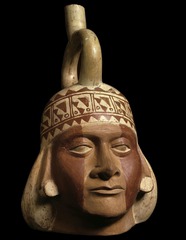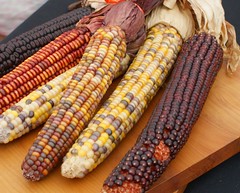| 11138095866 | Ancestral Pueblo | House built out of sun dried bricks and usually into the side of cliffs. Used in the Americas. They were in the four corners. Built by Anasazi, a people who established a mixed agricultural and gathering/hunting society in the southwestern part of North America. | 0 | |
| 11138095868 | "Semi sedentary" | People in North America that farmed in poor soil so they had to move around a lot within their boundaries. | 1 | |
| 11138095871 | Axum | *Definition:* Classical-era kingdom of East Africa, in present-day Eritrea and northern Ethiopia; flourished from 100 to 600 C.E. Relied on highly productive agriculture with plow-based farming; also an African empire with a strong naval and trading force. The empire was brought down due to environmental problems. *Significance:* A part at Adulis and used taxes to gain revenue from other empires. They didn't rely on hoe and digging stick. |  | 2 |
| 11138095873 | Niger Valley Civilization | *Definition:* Distinctive city-based civilization that flourished from about 300 B.C.E. to about 900 C.E. in the floodplain of the middle Niger and that included major cities like Jenne-jeno; the Niger Valley civilization is particularly noteworthy for its apparent lack of centralized state structures, having been organized instead in clusters of economically specialized settlements. *Significance:* Led to the uprising of Jenne-jeno |  | 3 |
| 11138095874 | Maya Civilization | *Definition:* Mesoamerican civilization concentrated in Mexico's Yucatan Peninsula and in Guatemala and Honduras but never unified into a single empire. Known for the only fully developed written language of the Pre-columbian Americas. *Significance:* Resembled the competing city-states of Mesopotamia and written language. Major contributions were in mathematics, astronomy, and development of the calendar (height from 200-900 CE). |  | 4 |
| 11138095875 | Teotihuacan | *Definition:* The largest city of pre-Columbian America, with a population between 100,000 and 200,000; seemingly built to a plan in the Valley of Mexico, Teotihuacán flourished between 300 and 600 C.E., during which time it governed or influenced much of the surrounding region. The name Teotihuacán is an Aztec term meaning "city of the gods." The first major metropolis in Mesoamerica in what is today Mexico; collapsed around 800 CE. It is most remembered for the gigantic "pyramid of the sun". *Significance:* Had long-distance trade which enabled them to live a more luxurious life. |  | 5 |
| 11138095876 | Chavín (pron. cha-BEAN) de Huantar | *Definition:* The first major urban civilization in South America (900-250 BCE). Its capital was located high in the Andes Mountains of what is today called Peru. *Significance:* Religious movement within class system of elites; dedicated to jaguar, crocodile, and snake deities that helped to unify coastal and highland Peru. Decline due to famine and drought. |  | 6 |
| 11138095877 | Moche | *Definition:* Important regional civilization of Peru from about 100 C.E. to 800 C.E., governed by warrior-priests. *Significance:* An important Andean civilization that built extensive irrigation networks as well as impressive urban centers dominated by brick temples. Farmed maize, beans, and squash adopted from Mesoamerica. Elites lived luxuriously, prisoners and poor were sacrificed in rituals. |  | 7 |
| 11138095878 | Wari and Tiwanaku | *Definition:* Civilizations in Andes Mountains before Inca Empire. *Significance:* Almost opposites, the Wari used irrigation for agriculture and Tiwanaku farmed. The Wari depended on the Tiwanaku. |  | 8 |
| 11138095884 | Hopewell culture | Named from its most important site (in present-day Ohio), this is the most elaborate and widespread of the North American mound-building cultures; flourished from 200 B.C.E. to 400 C.E. | 9 | |
| 11138095885 | Mound Builders | Members of any of a number of cultures that developed in North America east of the Mississippi River in what is now the United States and that are distinguished by their large earthen mounds that served as elaborate burial places, built during the period 2000 B.C.E. - 1250 C.E. Major city was Cahokia. | 10 | |
| 11138095886 | Nazca (pron. NAHZ-kah) | A civilization of southern coastal Peru, the Nazca became famous for their underground irrigation channels and their gigantic and mysterious lines in the desert in the form of monkeys, birds, spiders, and other designs. | 11 | |
| 11138095887 | pueblo | "Great house" of the Ancestral Pueblo people; a large, apartment building-like structure that could house hundreds of people. | 12 | |
| 11138095888 | "semi-sedentary" | Term frequently used to describe the peoples of the eastern woodlands of the United States, Central America, the Amazon basin, and the Caribbean islands who combined partial reliance on agriculture with gathering and hunting. | 13 | |
| 11138095889 | Meroë | Capital of a flourishing kingdom in southern Nubia from the 300 BCE to 100 CE. In this period Nubian culture shows more independence from Egypt and the influence of sub-Saharan Africa. Governed by female and male monarchs. Gained its wealth through long-distance trade.Deforestation contributed to its decline. |  | 14 |
| 11138095896 | Mesoamerican Agriculture | Agriculture in Central American primarily focused around maize, beans, chili peppers, and squash. |  | 15 |
| 11138095897 | Mesoamerican Trade | Back as far as the Olmecs, Central America peoples traded things like jade, serpentine, obsidian tools, ceramic pottery, shell ornaments, stingray spines, and turtle shells. |  | 16 |
| 11138095898 | Maya Writing | The Mayans wrote on stone, bark paper, and on deerskin. |  | 17 |
| 11138095899 | Tikal | The largest ancient Mayan city in the northern part of what is today Guatemala; traded items were jade, gold, shells, feathers, and cacao (as well as food like maize, beans, and squash). Built in 9th century C.E. Population was roughly 50,000. |  | 18 |
| 11138095902 | Tiwanaku | Name of capital city and empire centered on the region near Lake Titicaca in modern Bolivia (375-1000 C.E.). |  | 19 |
| 11138095903 | Anasazi | Important culture of what is now the southwest of the US (700- 1100 C.E.). Centered on Chaco Canyon in New Mexico and Mesa Verde in Colorado; they built multistory residences and worshiped in subterranean buildings called kivas. |  | 20 |
| 11138095904 | Pueblo Bonito | Important great house in Chaco canyon; trade networks linked together various pueblos that traded things like buffalo hides, copper, turquoise, seashells, macaw feathers, and coiled baskets. |  | 21 |
| 11138095905 | Cahokia | The dominant center of an important Mississippi valley mound-building culture, located near present-day St. Louis, Missouri; flourished from about 900 to 1250 C.E. It produced staples for urban consumers, and in return, its crafts were exported inland by porters and to North American markets in canoes. |  | 22 |
AP World History: Chapter 6 terms Flashcards
Primary tabs
Need Help?
We hope your visit has been a productive one. If you're having any problems, or would like to give some feedback, we'd love to hear from you.
For general help, questions, and suggestions, try our dedicated support forums.
If you need to contact the Course-Notes.Org web experience team, please use our contact form.
Need Notes?
While we strive to provide the most comprehensive notes for as many high school textbooks as possible, there are certainly going to be some that we miss. Drop us a note and let us know which textbooks you need. Be sure to include which edition of the textbook you are using! If we see enough demand, we'll do whatever we can to get those notes up on the site for you!

